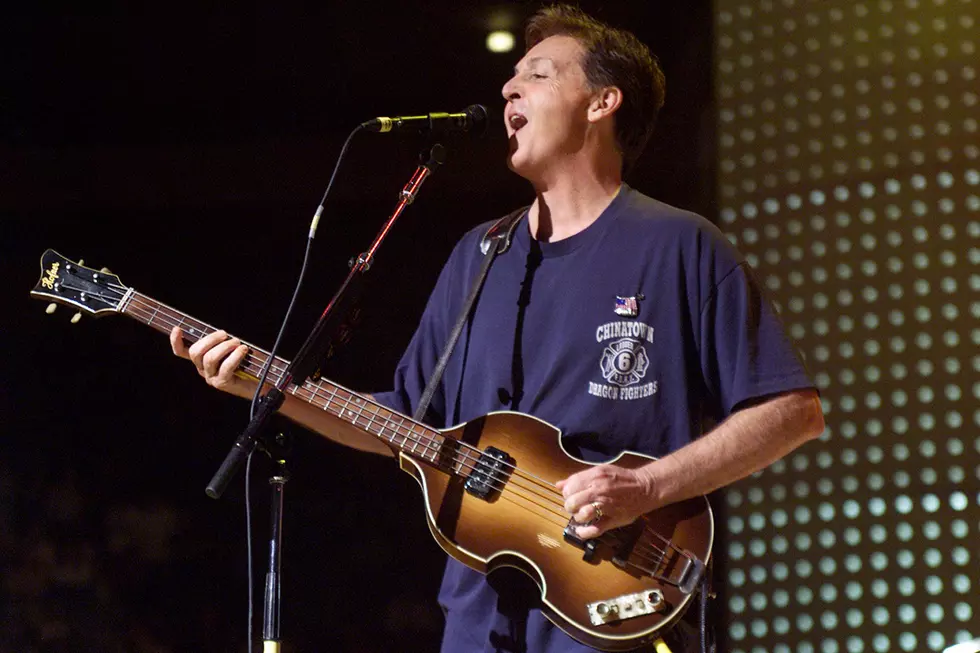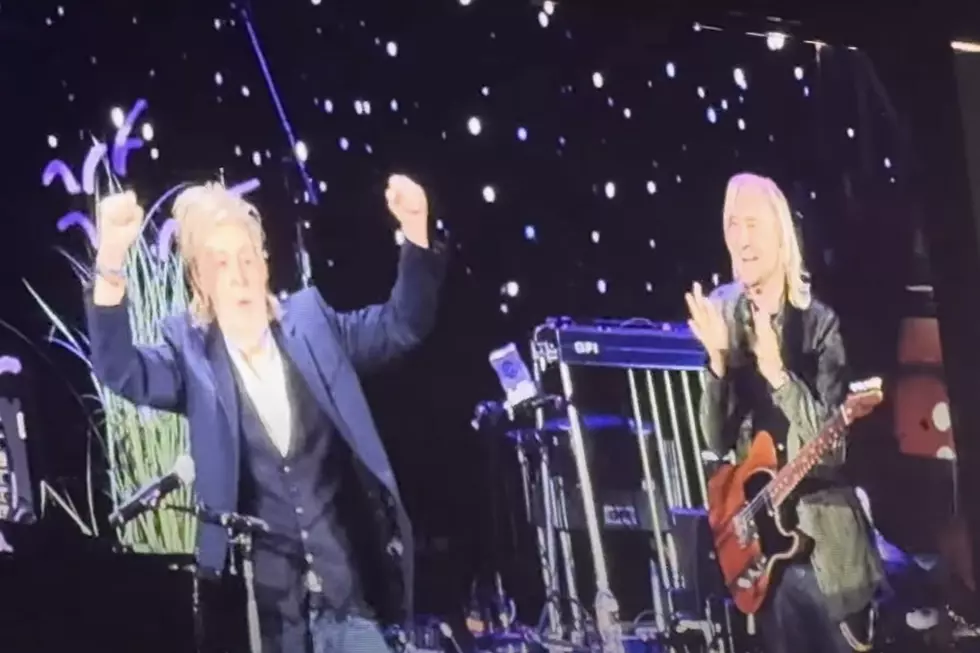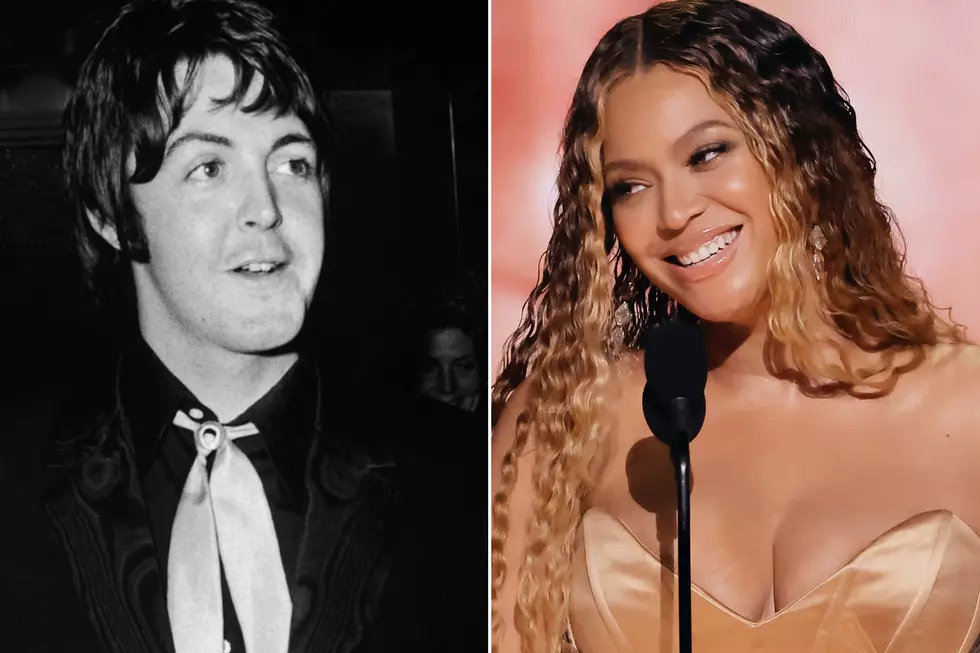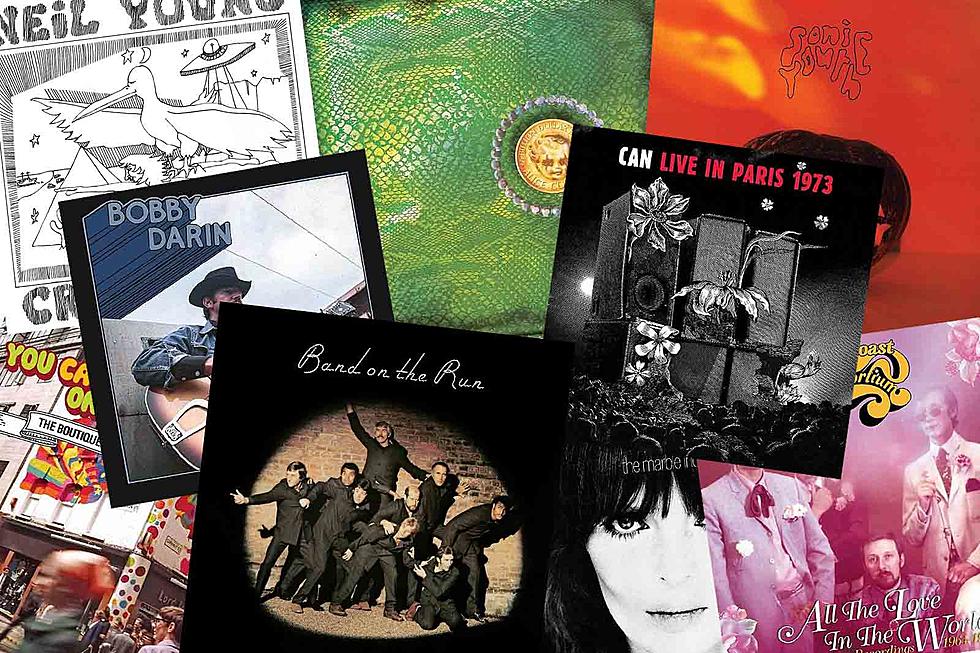
How Paul McCartney Smiled Through the Pain on ‘Run Devil Run’
After spending a year in mourning, Paul McCartney made a roaring return to rock 'n' roll. He had lost wife and frequent musical collaborator Linda to cancer in the spring of 1998, then vowed to take an extended break from performing and recording to deal with the excruciating loss.
When McCartney picked up his old Hofner bass again, he decided his next project would celebrate his rock roots. Run Devil Run would be a collection of mostly pre-Beatles rock tunes.
It wasn’t the first time the former Beatle had released a collection of oldies. About a decade before, he had hastily recorded a batch of cover tunes – Choba B CCCP – for exclusive release in the U.S.S.R. (it was re-released worldwide after the fall of the Soviet Union). McCartney had recorded Choba in a mere two days and he wanted to be a little more considered with this new album, while still maintaining a rough and raw feel that suited the material. As part of this musical reawakening, he sought to return to the studio regimen of the early Beatles records, which involved knocking out three or four tracks in a session. Additionally, the new project would feature some McCartney originals alongside the covers.
Macca assembled a supergroup to record both the new and old tunes, recruiting Pink Floyd’s David Gilmour and Johnny Kidd & the Pirates’ Mick Green on guitars and Deep Purple’s Ian Paice on drums. McCartney mostly stuck to bass, just as in the early Beatles days. Producer Chris Thomas kept the sound crisp and uncluttered so that the record wouldn’t sound like a muffled recreation, but a modern reinterpretation of vintage rock sides.
McCartney’s selection of songs helped keep things fresh too. Where Choba B CCCP (as well as John Lennon’s Rock ’n’ Roll) stuck mostly to well-known hits, Run Devil Run wandered through less-trampled terrain – songs like Fats Domino’s "Coquette," Carl Perkins’ "Movie Magg" and Larry Williams’ "She Said Yeah."
As such, they were songs that McCartney loved, but wasn’t practiced at playing. In many cases, the band members had never heard the original versions of the tunes, requiring Paul to quickly demo them for the other musicians in the studio. Then, the guys would record the songs on instinct. McCartney later said that the mantra for the sessions was “no thinking.” That idea prevented Paul, or anyone else, from getting too precious with any performance, resulting in bashed-out versions of "Honey Hush" and "I Got Stung" (on which a hollering McCartney makes Elvis Presley’s version sound like it was sung by Perry Como).
Listen to Paul McCartney's Version of 'Brown-Eyed Handsome Man'
Perhaps just a little bit of thinking was allowed, because McCartney was smart enough to put some creative twists on the better-known songs. An accordion was added to Chuck Berry’s "Brown-Eyed Handsome Man," lending it a zydeco groove (spiked with "Tequila"). Presley’s "All Shook Up" was performed with thunderous drive, while Ricky Nelson’s "Lonesome Town" found McCartney reaching into his keening upper register (in place of Nelson’s low-slung vocals).
Although most of the album was raucous, the moody ballads like "Lonesome Town" and the Vipers’ "No Other Baby" added an extra layer of meaning to Run Devil Run. After all, the man letting loose on "Shake a Hand" was also grieving the death of his wife. McCartney’s sadness imbued these teenage “I lost my baby” lamentations with real, adult-sized agony.
That carries over to the three original tracks on the album. It’s right there in the title of "Try Not to Cry" (a stomping R&B number), while "What It Is" was a boogie-woogie song Paul wrote and played for Linda in her final years. The title track is a driving, Berry-esque rocker inspired by bath salts (seriously!) that Paul bought in a hoodoo shop in Atlanta. That drugstore, in slightly altered fashion, is what appears on the album cover. Just like those bath salts were intended to expunge someone’s personal demons, Run Devil Run found McCartney blasting through his personal pain.
Run Devil Run was released on Oct. 4, 1999, to the most positive reviews McCartney had received in decades. The album also did well commercially, peaking at No. 12 in Britain and No. 27 in America. McCartney took Gilmour, Paice and the gang on a quick promotional tour, playing scorching versions of covers and originals on TV shows – and even returning to Liverpool’s Cavern Club.
That series of energetic performances led to the formation of stripped-down regular backing band a couple years later. That lineup ended up staying together longer than any of McCartney's other bands, despite never achieving supergroup status. As anyone who went to the subsequent McCartney concerts knows, however, they were every bit as powerful.
Looking back at Run Devil Run, it’s clear that the album wasn’t just a back-to-basics exercise. It was a full-fledged rock and roll re-awakening for Paul McCartney.
The Best Song From Every Paul McCartney Album
Was Paul McCartney’s ‘Broadstreet’ Doomed to Fail?
More From Ultimate Classic Rock









